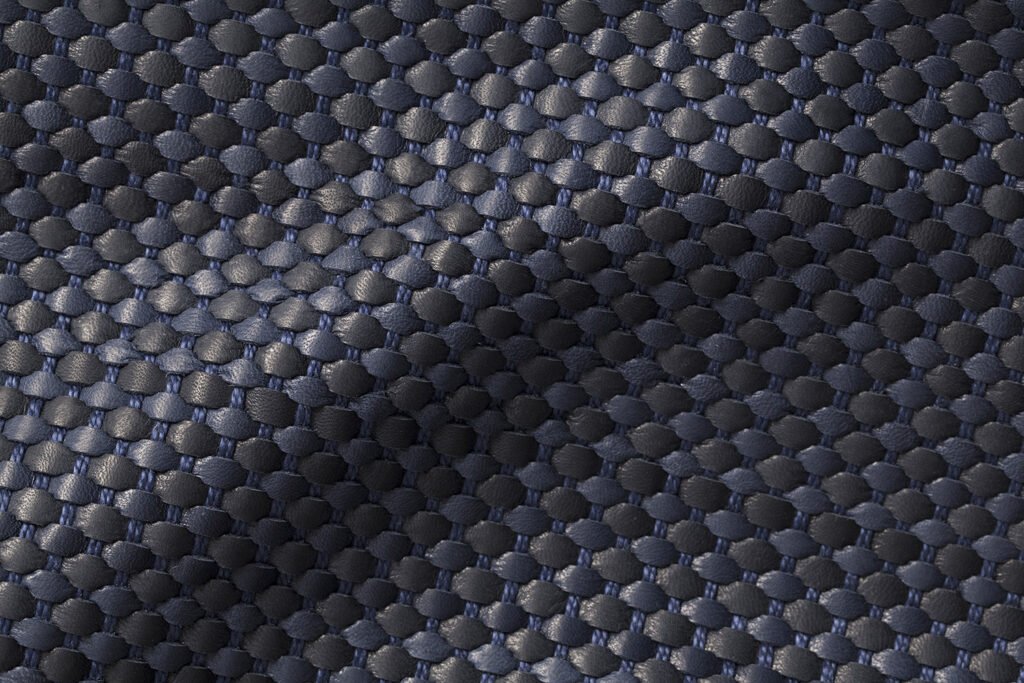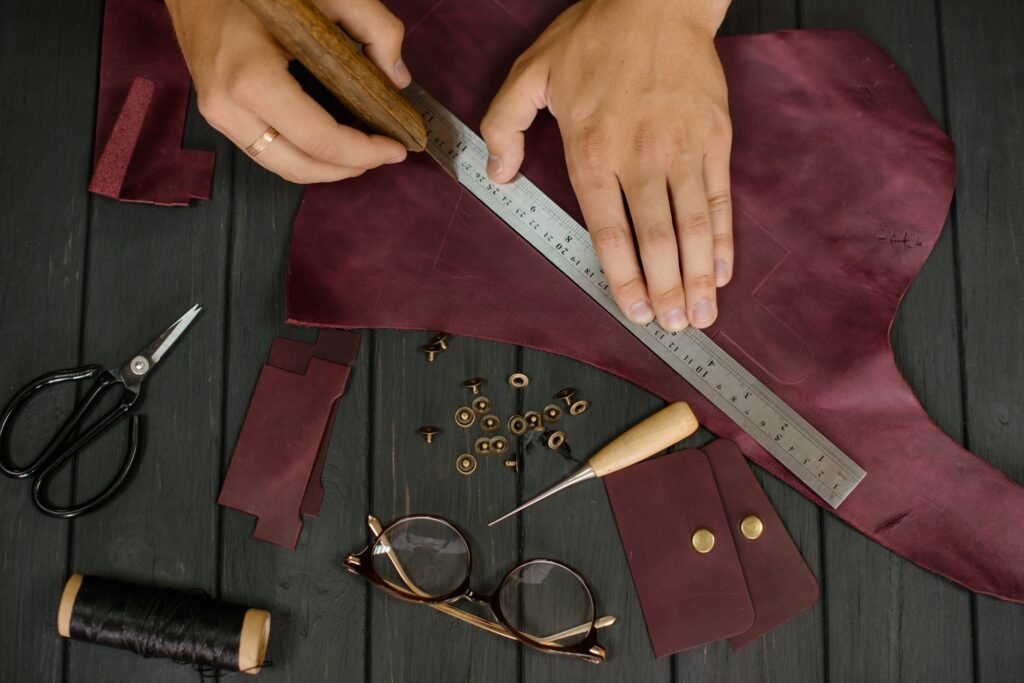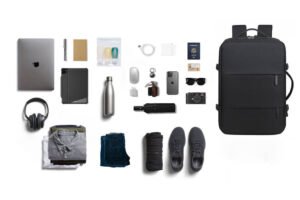In luxury leather goods, woven leather is more than just a craft. It represents a brand’s elegance and cultural identity. From Bottega Veneta’s Intrecciato to Hermès’ limited-edition bags, weaving techniques connect material aesthetics with practical function. This guide combines two authoritative sources to explore woven leather. We will cover pattern types, production processes, and quality identifiers to help you understand its appeal.
1. What is Woven Leather?
Woven leather is a material made from strips of treated leather, either genuine or artificial. Artisans cut the leather into strips and then weave them together by hand or machine. This process creates a material that is breathable, soft, and strong. Designers often use it for high-end bags, shoes, and furniture.

2. Common Weaving Patterns and Structures
| Pattern Name | Description | Recommended Use |
| Basket Weave | The most common pattern. Weaving creates a 90° grid. | Classic and stable. Often used for business bags. |
| Diagonal Weave | Weaving runs diagonally, creating angled lines. | Offers a dynamic look. Great for modern bags and women’s shoes. |
| Twill Weave | Has a three-dimensional feel, similar to denim. | Suited for accessories or decorative belt surfaces. |
| Hexagonal Weave | Creates a six-sided pattern. Requires advanced skill. | Common in custom designs and high-fashion collections. |
| Diamond Weave | Resembles Chanel’s quilted diamond pattern, but achieved through weaving. | Has a feminine feel. Ideal for mini bags or accessories. |
| Intrecciato | Bottega Veneta’s signature style. Uses wide, flat leather strips. | Symbolizes understated luxury and strong brand identity. |
3. Production Process and Key Techniques
The quality of woven leather depends on precise control at every step:
- Leather Selection: Artisans often use vegetable-tanned leather (like calfskin) or high-grade PU leather. This choice determines the final product’s flexibility and durability.
- Strip Cutting: The strips must have a precise width, usually between 3mm and 10mm. Their edges should be smooth and clean-cut.
- Oil Treatment: Some high-end makers treat leather strips with nano-emulsified oils. This enhances flexibility and water resistance.
- Weaving Process:
- Hand-weaving: Creates a more dynamic texture but takes longer.
- Machine-weaving: Is efficient and uniform but lacks a unique character.
- Shaping and Stitching: Weavers press multiple layers to set the shape. They often finish the edges with binding to prevent fraying.

4. How to Identify High-Quality Woven Leather
| Quality Check | High-Quality Signs | Low-Quality Warnings |
| Pattern Uniformity | Strips are evenly spaced. The weave is tight and seamless. | The pattern is crooked. Strips vary in thickness. |
| Edge Finishing | Edges are bound or dyed, with no fraying. | Edges are rough and may unravel. |
| Feel | Soft yet supportive. Not dry or stiff. | Feels too hard or sticky. |
| Stitching Details | No skipped stitches. Corners are smooth. | Loose or uneven stitching. |
5. Sustainability and Market Trends
As environmental awareness grows, brands are using new methods in their weaving processes:
- Weaving with recycled leather: This reduces material waste.
- Using vegetable-tanning and chrome-free processes: These methods lessen the environmental impact.
- Designing for disassembly: This makes products easier to recycle.
6. Conclusion
Woven leather re-imagines a material. It also builds a brand’s story. It can convey “quiet luxury,” reflect the warmth of craftsmanship, and give designers a new way to explore materials. Whether you are a consumer, brand manager, or designer, understanding its craft and style is key. This knowledge will help you build a stronger product and succeed in the market.


